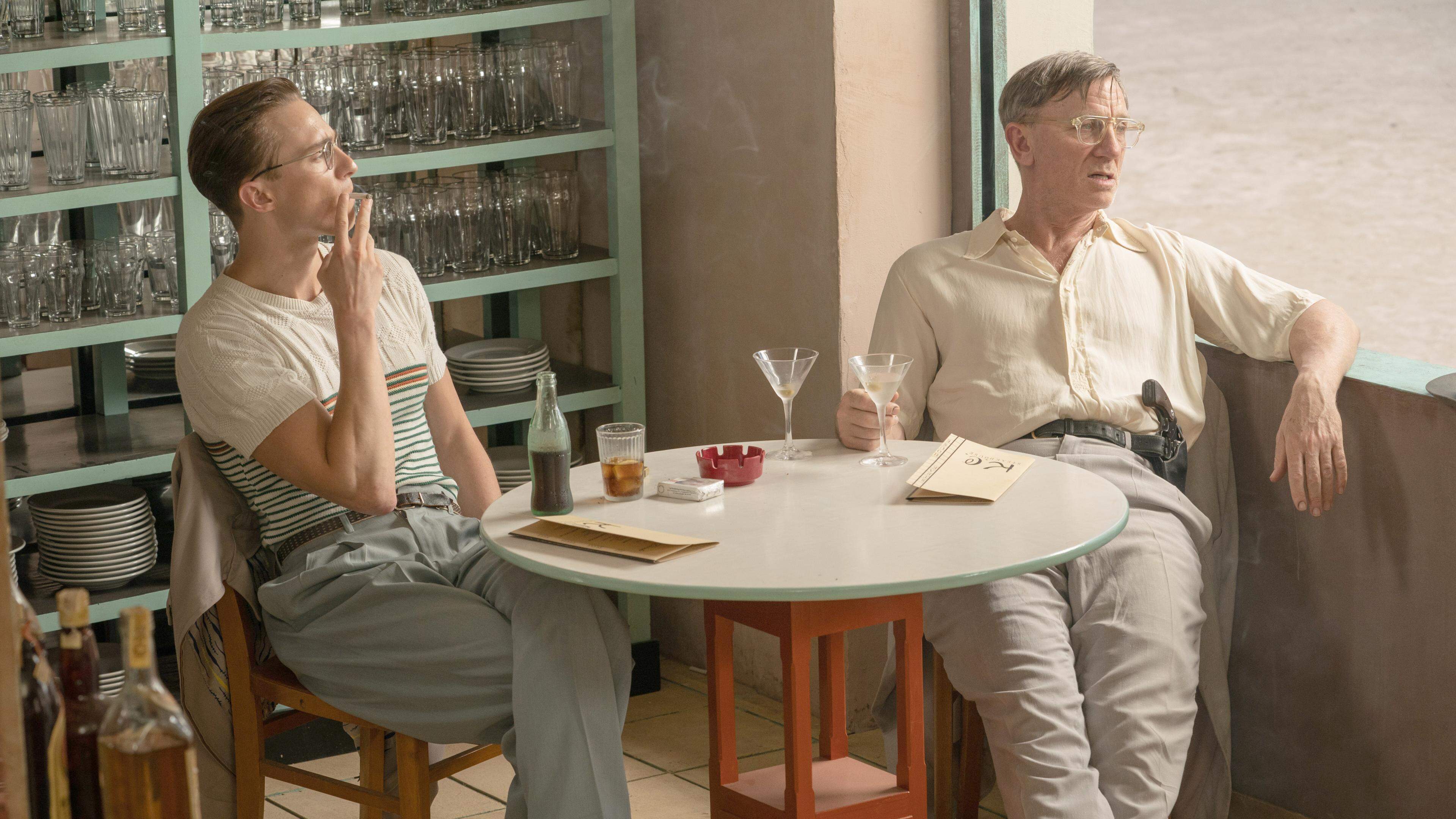Luca Guadagnino's « Queer » leaves cinema seekers the language

Anyone who thought that it was about an older man in « Queer » who falls in love with a younger man after classical rhetoric has to get a surprise. At least if the film is subjected to a more profound reflection.
They are the 1950s. The American William Lee (Daniel Craig) has left his home country and is currently setting up in Mexico City, where he can freely pursue his homosexuality and heroin addiction. The coquette of the coquette confidently enjoys the nightlife until one evening he meets the young Eugene Allerton (Drew Starkey). It quickly becomes clear that there is an insecure and lonely man behind Lees's facade who longs for love and closeness. He waves Liebestoll Allererton, who indicates Lee at a moment, just to reject him in the next.
In the relationship between Lee and Allerton, a confused dynamic of power develops in which the latter holds the reins in his hand, while Lee has almost pitiful effects on the audience and the spectators. Nevertheless, he cannot let go of Allerton and invites him to a trip to South America.
The aim of the foray is to find a plant called Yagé in the Ecuador jungle that is said to be telepathic skills. Lee articulates his desire for telepathic communication with the sentence « I want to talk to you without speaking » (« I would like to talk to you without speaking »), which he addresses in the drunken state of Allerton one evening.
Daniel Craig and Drew Starkey (right) convince with their acting performance. Photo: A24
A conclusion that raises many questions
Luca Guadagninos « Queer » is based on the semi-autobiographical novella of William S. Burroughs of the same name. With his adaptation and above all with the end of the film, the director ensures enough conversation.
The film can hardly be made aesthetic allegations. With his color palette, he creates an atmosphere that immediately puts the spectators into another time. The anachronism caused by the music does not interfere.
In addition to the artistic staging, the grandiose acting of Craig and Starkey, which manage to captivate the viewers, also stands out without having them cheered with their figures. Craig in particular succeeds in credibly conveying the bias of his figure. From a visual point of view, “Queer” is a masterpiece. The same thing cannot be said for its end.
Right from the start, Guadagnino introduces surrealistic moments, which, however, do not limit the understanding of the action.
« Queer » is divided into three chapters and an epilogue. Right from the start, Guadagnino introduces surrealistic moments, which, however, do not limit the understanding of the action. The situation is different from the third chapter that plays in the jungle. The viewers see how Lee and Allerton drink the Yagé brew and transcend their bodies.
The epilogue that joins this chapter plays two years later. The concrete consequences of the Yagé tea and how it influences the relationship between Lee and Allerton remains unclear. Also, the epilogue is teeming with symbols that tell the plot instead of dialogues. The cinema is left with many open questions in a first moment.
Lee (right) and his young Compagnon Eugene Allerton are looking for the Yagé plant in the jungle of Ecuador. Photo: A24
The film is penetrated by symbols
Two symbols that run through the whole film are the thousand feet and the Ouroboros, a snake that forms the infinity sign in the film with their body and bites their own tail crying. The Ouroboros could be a symbol that Lee will be trapped forever in the circle of self -destruction and in the relationship with Allerton, while Allerton is free to go and develop further. This is expressed by its moving, crawling thousand football chain.
The cinema is left with many open questions in a first moment.
How exactly the symbols should be interpreted is up to the viewers. Likewise, the end of the film can still be reflected on a completely different level: What if it is actually not about the relationship between Lee and Allerton, but about Lee, who gets into the pure with his boy? Eugene Allerton embodies the young William Lee in this sense. This is not only suggested by the costume design of the two characters, but by their same very specific view of be queer: “I am NOT QUEER. I am Disembodied « ( » I'm not queer. I am disembodied « ).
An Oscar favorite and Daniel Craig as a gay bonvivant
One thing is certain: « Queer » is not a film that you look at in the cinema to relax. It is one of the more experimental works Guadagninos and requires intensive reflection. The multi -layered adaptation leaves many questions open, which can lead to frustration. On the other hand, the attraction is precisely in this large scope for interpretation. You should only let the film work on you before trying to understand it as a whole.







